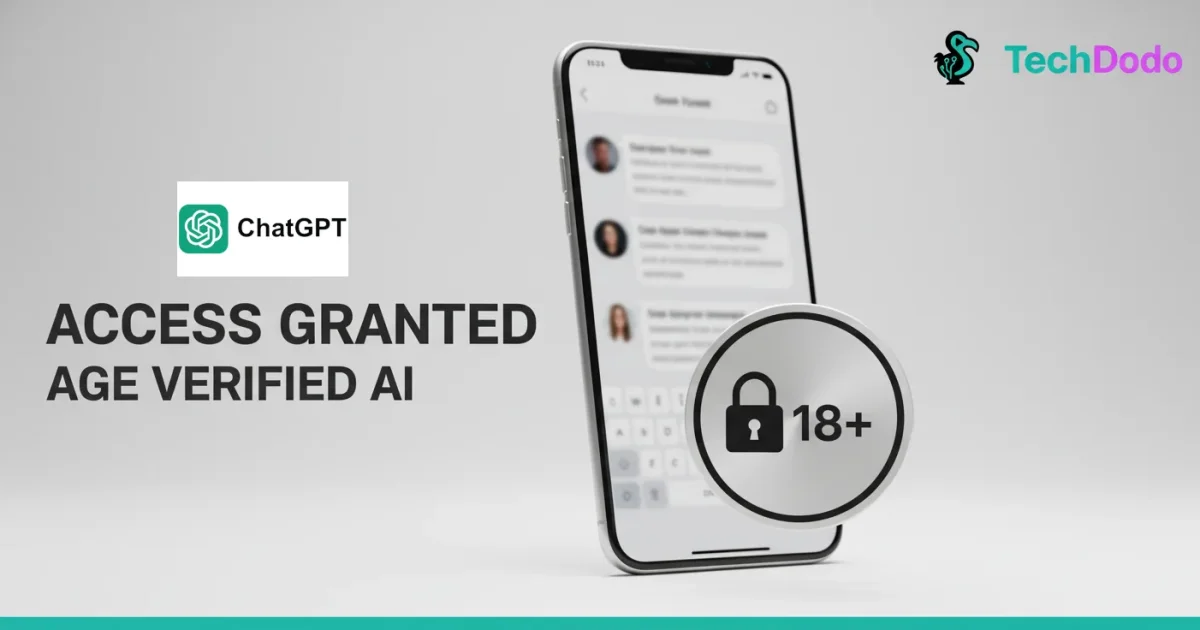ChatGPT’s adult-only erotica is coming. India has questions.
OpenAI says it will enable erotica in ChatGPT for verified adult users starting December 2025—a policy shift pitched as “treat adult users like adults.” Multiple outlets attribute the plan to CEO Sam Altman’s public statements last week, with December tied to broader age-gating improvements.
If your first thought was “that escalated quickly,” you’re not alone. But look past the headlines and the move is fairly predictable: companion AI, flirt bots, and suggestive chat have been booming, and rivals already skate close to the line. OpenAI, historically conservative on sexual content, appears to be shifting to a controlled, adult-only model.
What exactly has OpenAI said?
The company’s leadership has indicated that erotica will be allowed only for age-verified adults, with the change tied to stronger guardrails around wellbeing and mental-health risks. Reporting from TechCrunch, Axios, The Guardian and others frames this as a rollback of some safety restrictions—a response to user feedback that ChatGPT had become overly sterile in some contexts. December 2025 is the target for the age-gating update, after which erotica for adults is set to be permitted.
Notably, recent policy pages emphasize protecting minors from sexual content; the adult-only lane would need to coexist with those obligations. Expect continued bans on anything involving minors, non-consensual content, or illegal material—areas where OpenAI’s policies remain strict.
Why now?
Two reasons: user demand and competitive pressure. AI companions and NSFW chat communities have exploded, with other platforms already offering or tolerating more permissive experiences. Media coverage this week framed OpenAI’s move as both market-driven and a way to standardize adult access while keeping minors out.
There’s also a strategic angle: consumer subscriptions. Adult features—done safely—could strengthen premium tiers while OpenAI races to fund ever-hungrier compute. Industry watchers are blunt: sex is a big market, and OpenAI won’t be the first to monetize it (or the last).
What changes for Indian users?
India brings a strict under-18 definition of “child” under the Digital Personal Data Protection (DPDP) Act, 2023, and sensitive obligations around children’s data and harm. Any adult-content feature must ensure reliable age verification and airtight minor-protection—no excuses.
Separately, the IT Rules 2021 and related guidance emphasize access controls and age-verification for mature content, with swift takedown expectations for unlawful material. While these rules are often discussed for OTT platforms and intermediaries, the compliance mindset is relevant: publishers and intermediaries are expected to implement age-gating and keep illegal sexual content off their systems.
In practice, for Indian users this likely means:
- Rigorous age checks before any erotica unlocks. If OpenAI uses document-based or tokenized verification, it must handle personal data per DPDP and minimize friction.
- Hard blocks for teens: under-18 access to sexual content is prohibited. Any failure here risks legal trouble and reputational damage.
- Fast response workflows for illegal content (e.g., non-consensual sexual imagery requests), aligning with India’s takedown expectations.
How might OpenAI verify age?
OpenAI hasn’t publicly detailed the India-specific method. Media reports mention an age-gating system rolling out in December; a spokesperson indicated reliance on an internal age-prediction/verification layer. For India, compliant implementations typically involve government-ID–based checks, telecom KYC tokens, or third-party verification providers—each with privacy and UX trade-offs. Until OpenAI publishes specifics, verification method = unknown for India.
Pros (for adult users)
- Clear, consent-driven lane: Adults get an opt-in space for erotic writing and roleplay without jail-breaking.
- Better controls: Expect on/off toggles, tone sliders, and safety nudges; OpenAI has hinted at more “human-like” customization.
- Consolidation: Safer alternative to unmoderated third-party bots.
Cons (and caveats)
- Verification friction: If ID-based, some adults will balk; if too light, regulators won’t be amused.
- Privacy sensitivity: Erotic prompts are deeply personal; storing or profiling such data would be a lightning rod. (DPDP principles on data minimization will loom large.)
- Policy whiplash risk: If safeguards stumble, features could get throttled or paused.
What experts disagree on
Commentary splits on whether “AI sexting” helps or harms wellbeing. Some argue adult erotica can be a safe outlet; others worry about dependency and blurred boundaries with “companion” bots—especially if future updates change personalities or limits. Expect active debate and new research once the feature ships.
India outlook: what to watch in December
- Launch scope: Global flips often roll out regionally. It’s unclear if India will be day-one—watch support notes. Status for India is not disclosed as of 20 Oct 2025 (IST).
- Age-gate UX: Does OpenAI use local verification rails (Aadhaar-linked tokens, telecom KYC gateways) or a global vendor? Unknown.
- Enforcement posture: If reports of misuse surface, Indian authorities could lean on IT Rules for rapid takedowns or guidance.
In short: OpenAI’s plan signals a calibrated shift rather than a free-for-all. If the company pairs strong age-gating with privacy-by-design and Indian-specific compliance, adult users get more choice—without compromising protections for teens. That’s the tightrope.
